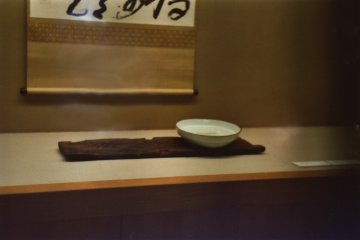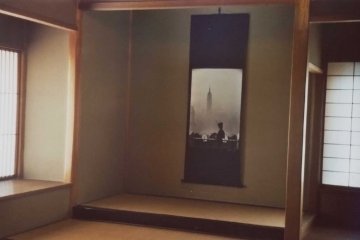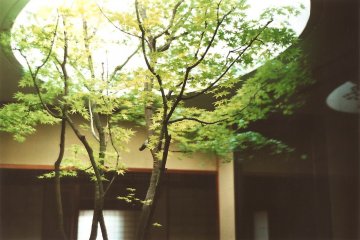Enveloped in a world of quiet, passive reflection; a world of contemplation, of simplicity and elegant beauty. This is the feeling that encapsulates the atmosphere of the Kahitsukan, the Kyoto Museum of Contemporary Art, in the Kansai region of Japan.
Kahitsukan is situated along the main street of Kyoto’s Gion district: an area typically thought of as the hub of Kyoto’s nightlife and also a popular site for spotting the elusive Japanese geisha. Yet entering this gallery is a sobering experience. A far cry from the clinical white-walled gallery found all too prevalent in contemporary settings, Kahitsukan evokes a more traditional recollection of Japanese interiors. The gallery is divided into various rooms, each capturing notions of a recognisable Japanese vogue of which the Tea Room is the epitome.
When visiting, be prepared to encounter a more ‘reserved’ form of contemporary art. You will not find any Yoko Onos or Yayoi Kusamas here. Instead, you will come to reflect upon artists who are viewed as Modernist greats and influentials in Japanese art. Kahitsukan exhibits work from both their private collection and special exhibitions, which include Modern and Contemporary paintings, craft works and photographs. There is an evident fondness for the exhibition of Modernist photographers such as Marc Riboud or Elliott Erwitt, whose powerful works can be thoroughly received in this contemplative space. The didactics included for artworks are inclusive of both English and Japanese transcriptions.
The museum's private collection, of which can be viewed at most times of the year, is centralised on the work of three main artists: Kagaku Murakami, Kaoru Yamaguchi and Rosanjin Kitaoji. Each artist, whose practice evolved in the early 20th Century, is notably influential for their contributions to Japanese arts and culture. It is a treasure to view the works of these artists, and the way in which their works uniquely investigate a reinvention of Japanese elements in a traditional context. Anyone interested in Japanese arts and their Modernist discourse should not look past the works of these artistic pioneers.
For a sacrificial fee of ¥1,000 (or ¥800 for students) you can gain access to Kahitsukan and its reflective spaces. Whilst it may not be the ultimate cultural candy for all travellers, the gallery does offer a fantastic experience of Japanese cultural elements with an interesting insight of how Modernism has affected traditional arts in the East. If you are in the area during the day, it offers a fantastic refuge for anyone looking to ‘zen out’ from the big city bustle.









